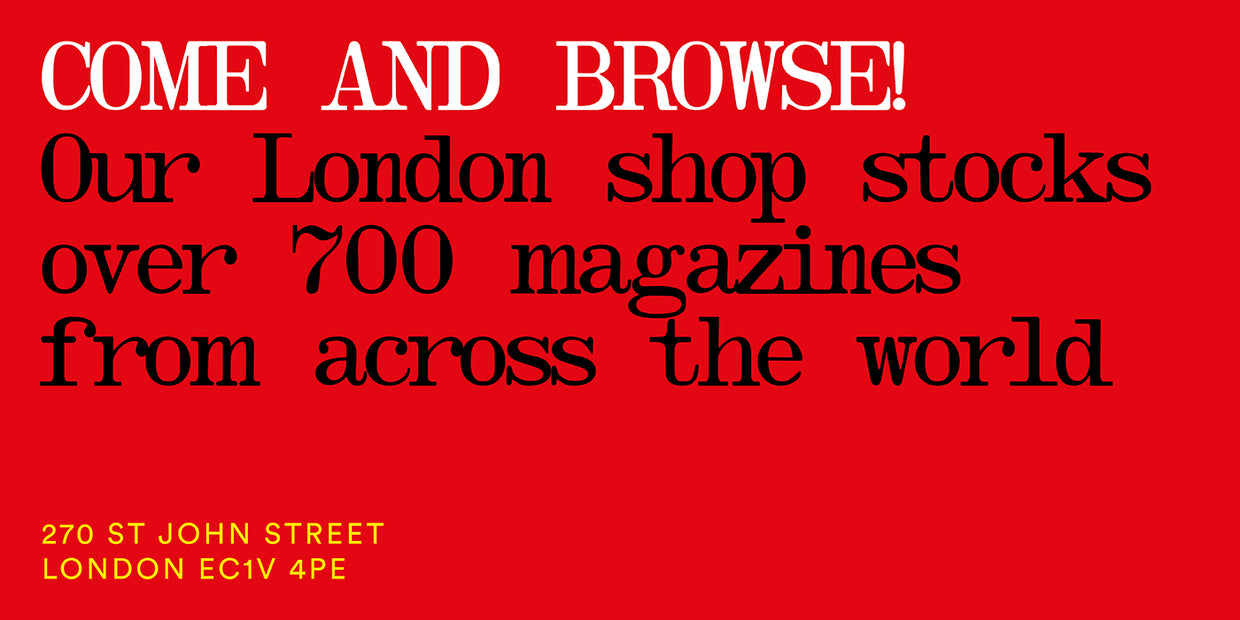
Garagisme #6
More customers in the shop are asking for magazines to do with sustainability – and as recent journal posts about magazines such as More or Less, or It’s Freezing in LA! show, supply is following demand. So, how does a magazine about cars justify itself in the age of climate change awareness?
Garagisme is a ‘Contemporary Automotive Journal’, but it isn’t your average car mag aimed at a Top Gear-watching audience. You open it up to a quote from Testo Junkie (above), the politically-charged memoir about taking Testosterone, by writer and philosopher Paul B. Preciado, that seeks to undo the concept of gender prescribed on bodies by capitalism. It’s a turbo-charged way to begin a magazine that offers an alternative to the typically masculine approach to car culture. Elsewhere, casual references to Deleuze rub up against photojournalism and you get the impression that this Paris and Los Angeles-based magazine is what would happen if an art magazine happened to theme an issue about motor vehicles, rather than the other way around.
The magazine is heavy with photography; text is scarce apart from a few interviews, short essays, and a small amount of fiction, such as a dreamy post-apocalyptic piece by Hélène Mastandréas reminiscent of J.G.Ballard (above), but it is the imagery and art direction that really captivate me.
The front cover is taken from ‘Dystopian Auto Liveries’, by Adam Dupré and Justin Hunt Sloane (above). Each spread features a mockup of imagined decals on a fast-looking car, laying out advertising for non-existent sponsors or nonsense tech-related symbolism. Not missing a beat, the version on the front cover features a dinosaur skeleton surrounding the petrol valve, a wry commentary on fossil fuels. The inclusion of some real brands, such as Pirelli on the tyres, as well as the almost photo-realistic graphics, mean that it’s not hard to imagine these being real racing cars in an alternate playing field.
Photos of panels that have been removed from crashed cars, which are in the process of being wrapped in coloured film constitute one of the more arty features (above). Stood up in isolation, the excess film hangs off like a high-fashion ballgown on a red carpet, the indents where they have been bumped tangible evidence of their uselessness, or poetic possibilities.
In what is my favourite example of clever art direction, a double page spread matches up high-contrast black & white photos of Steven Froissard’s scarred skin with him riding his motorbike (above). The story is an uplifting one about an against-the-odds recovery from a life-threatening crash, and getting back on the bike. Pairing up close-ups of scar tissue and veins with tyre-marked roads and dust tracks is a powerful move.
Each item in the contents list is demarcated with a graphic that looks like a bumper sticker identifying what country your car originated in. The clever type and layout continues throughout, where logos and credits are shoved together in strips as though they were adorning the side of a car, or as though they were the end credits of some hyper-stylish Hollywood film, scrolling up over a scenic sunset shot of the heroine driving off into the horizon (above). Considering that many of the pages are full-bleed images, the typography does a lot to convey the theme of the magazine, as well as create space and stand out for itself.
There are a couple of elements which I felt could have been better thought through: a soft-focus voyeuristic shoot towards the back is a bit of a let down after the diverse content before it. I also felt that, although it’s clear that Garagisme is at least cynical about burning fossil fuels in pursuit of speed, it could do more to suggest that there are alternatives. It’s not unrealistic to think that it could feature electric vehicles in some way; electric is supposedly the future of the automotive industry, so what could be more contemporary?
Overall, though, I found this magazine quite beguiling, and an example of a luxury concept that knows it is an aspirational fantasy, and is all the more interesting for being unashamed to luxuriate in its own escapism. Perhaps the future for cars is as fantasy – for their seductive curves, vibrant colours, and place in our cultural narrative – rather than as reality.
Editor-in-chief: Gilles Uzan
Creative directors: Yego Moravia and Gilles Uzan
Buy your copy from the magCulture Shop:









